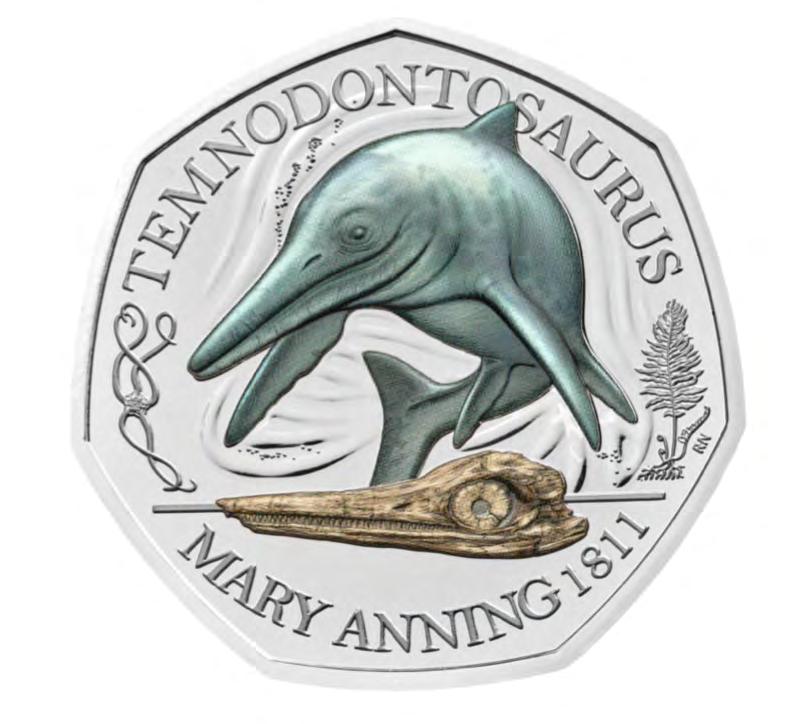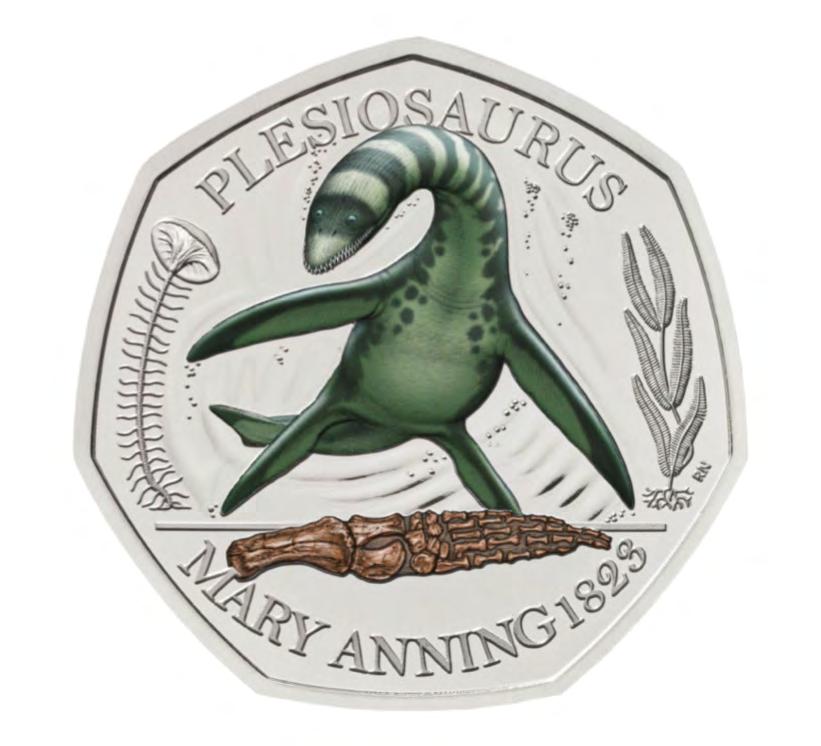
2 minute read
Royal Mint celebrates Mary Anning with paleo-art 50p coins
The Royal Mint, the original maker of UK coins launched a new commemorative coin collection celebrating Mary Anning - historic fossil collector and paleontologist. This is the second coin collection in The Royal Mint’s series ‘Tales of the Earth’.
The first coin released shows Temnodontosaurus, one of the largest of the ichthyosaurs. This apex predator once roamed the ocean that covered much of southern Britain.
Advertisement
The other coins show more of Anning’s discoveries - Plesiosaurus and Dimorphodon.
We can see Plesiosaurus to the bottom right - a genus of large marine reptiles from the early Jurassic, known to be found in the Lias rocks exposed along the ‘Jurassic coast’ of England. Many have long associated the Plesiosaurus with the mythical ‘Loch Ness Monster’.
Plesiosaurus is a genus of extinct, large marine sauropterygian reptiles that lived during the early part of the Jurassic period, commonly observed in the Lias rock formations of England with nearcomplete fossil skeletons.
These paleoart coin designs were created by paleoartist Robert Nicholls along with the help of Sandra Chapman of the Earth Sciences Department at the Natural History Museum. They achieved a scientifically accurate reconstruction of the species and their surrounding environments of the past.

Editor’s comment
Looking closely at the Limited Edition (50,000) commemorative coins issued by the Royal Mint, titled The Mary Anning Collection 2021 UK Brilliant Uncirculated Colour Three-Coin Series, I was impressed by the details and use of colors seen in the illustrations of Temnodontosaurus, Plesiosaurus and Dimorphodon, which look almost like tiny paintings. The coins also come presented along with their own eye-catching displays.
The most recently released coin from this collection is that of Dimorphodon. We can see Dimorphodon beautifully illusrtated in the coin to the right - which is a type of mediumsized pterosaur from the early Jurassic.
With the assistance of a paleoartist and expert input, we can see the accurate details of these Plesiosaurus, Temnodontosaurus and Dimorphodon renditions.


About
The Royal Mint has an unbroken history of minting British coinage dating back over 1,100 years. Based in the Tower of London for over 500 years, by 1812 The Royal Mint had moved out of the Tower to premises on London’s Tower Hill. In 1967 the building of a new Royal Mint began on its current site in South Wales, UK, to accommodate the minting of UK decimal coinage.
Today, The Royal Mint is the world’s largest export mint, supplying coins to the UK and overseas countries. The Royal Mint has also diversified into a number of other complementary businesses, building on the values that have been at the heart of the organization throughout its history - authenticity, security, precious metals, craftsmanship and design.
Links
Mary Anning collection coins: https://www.royalmint. com/our-coins/events/the-mary-anning-collection/








